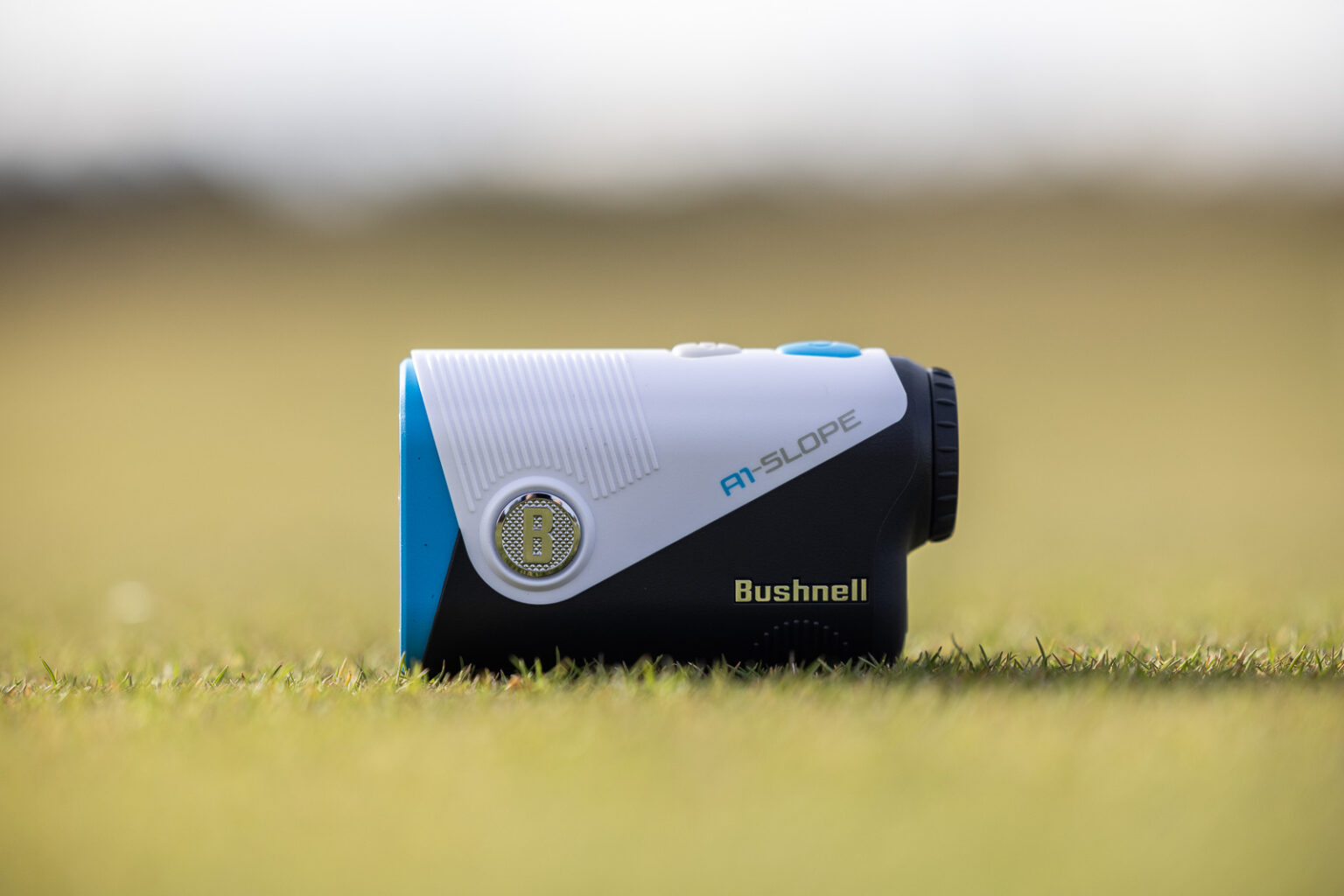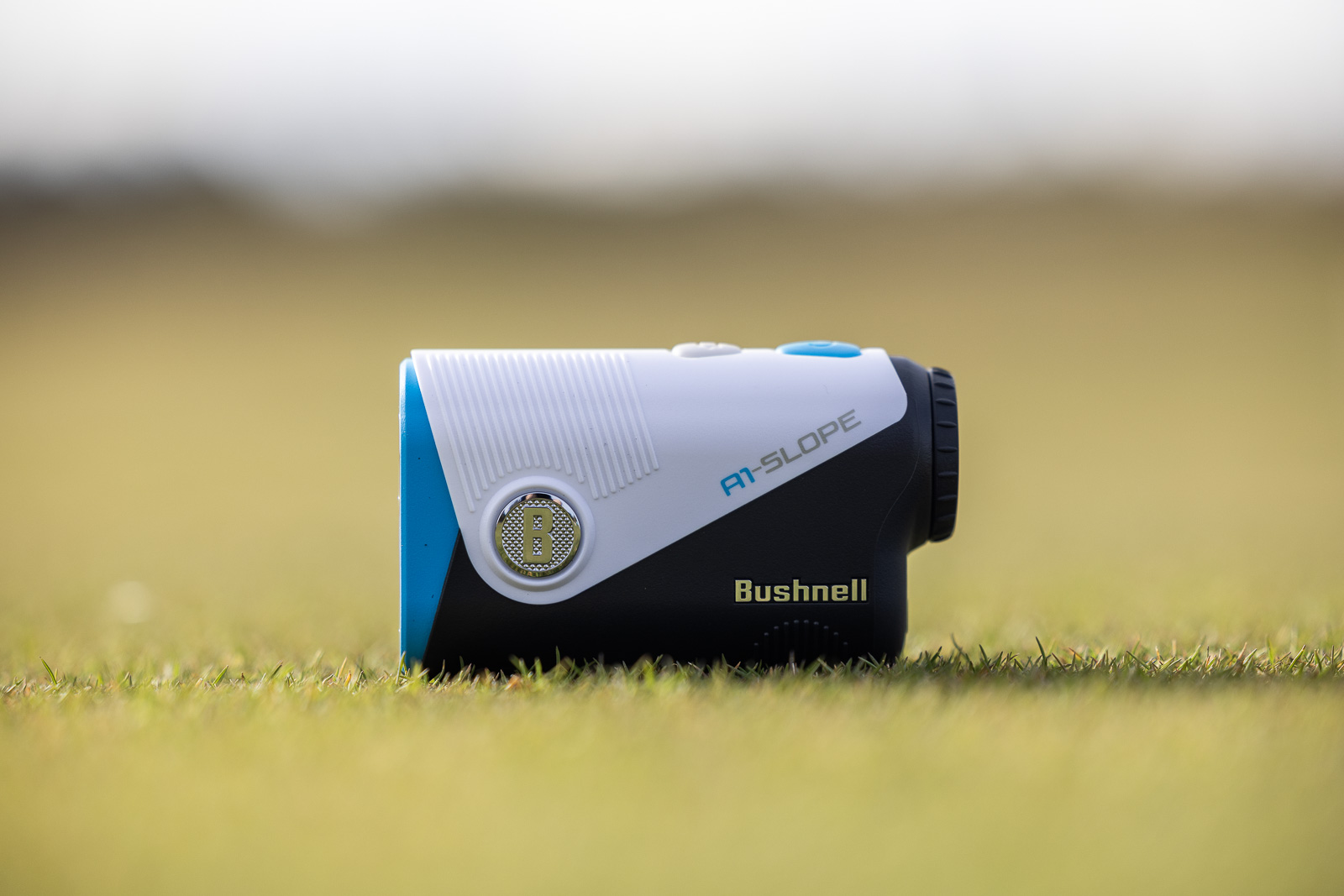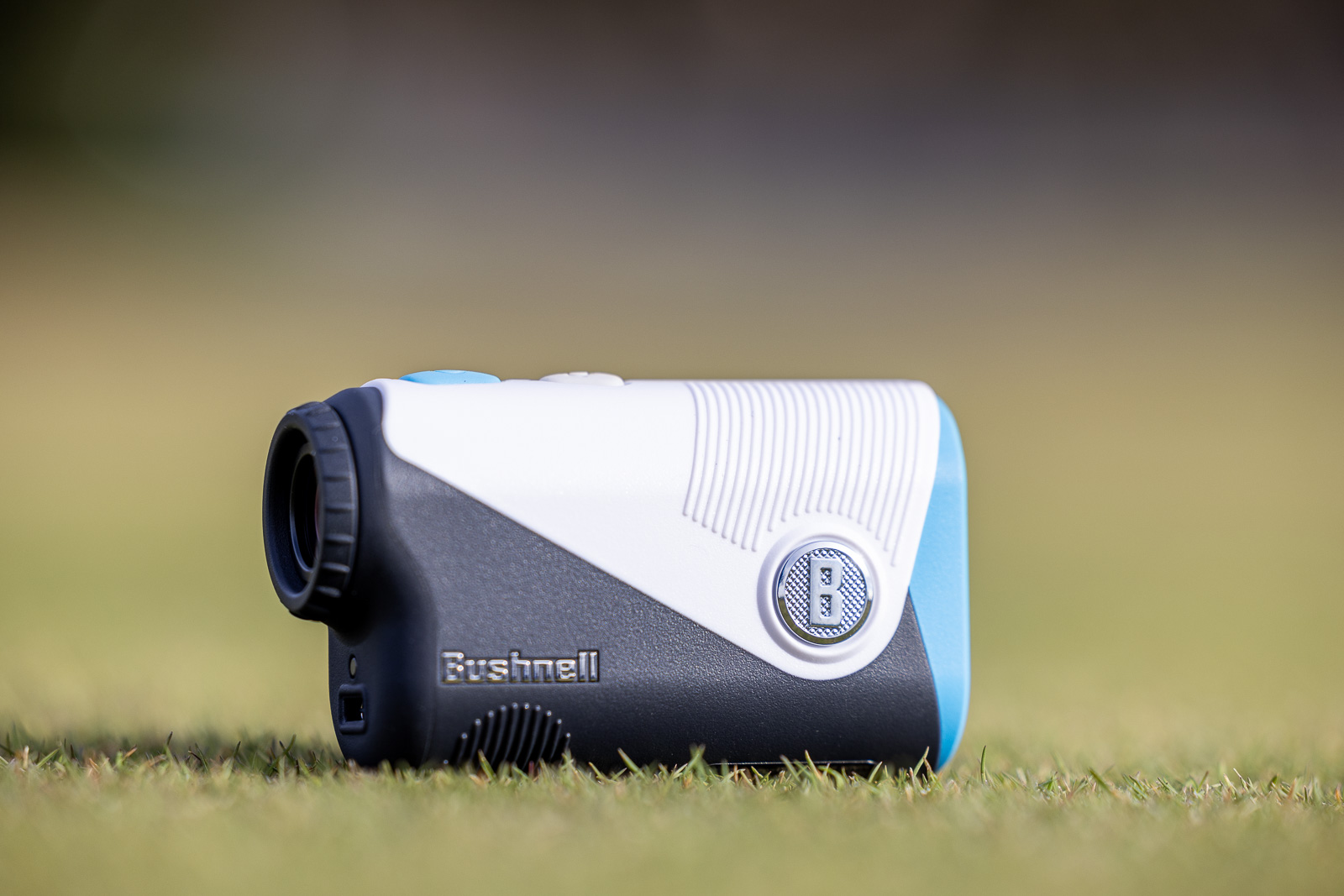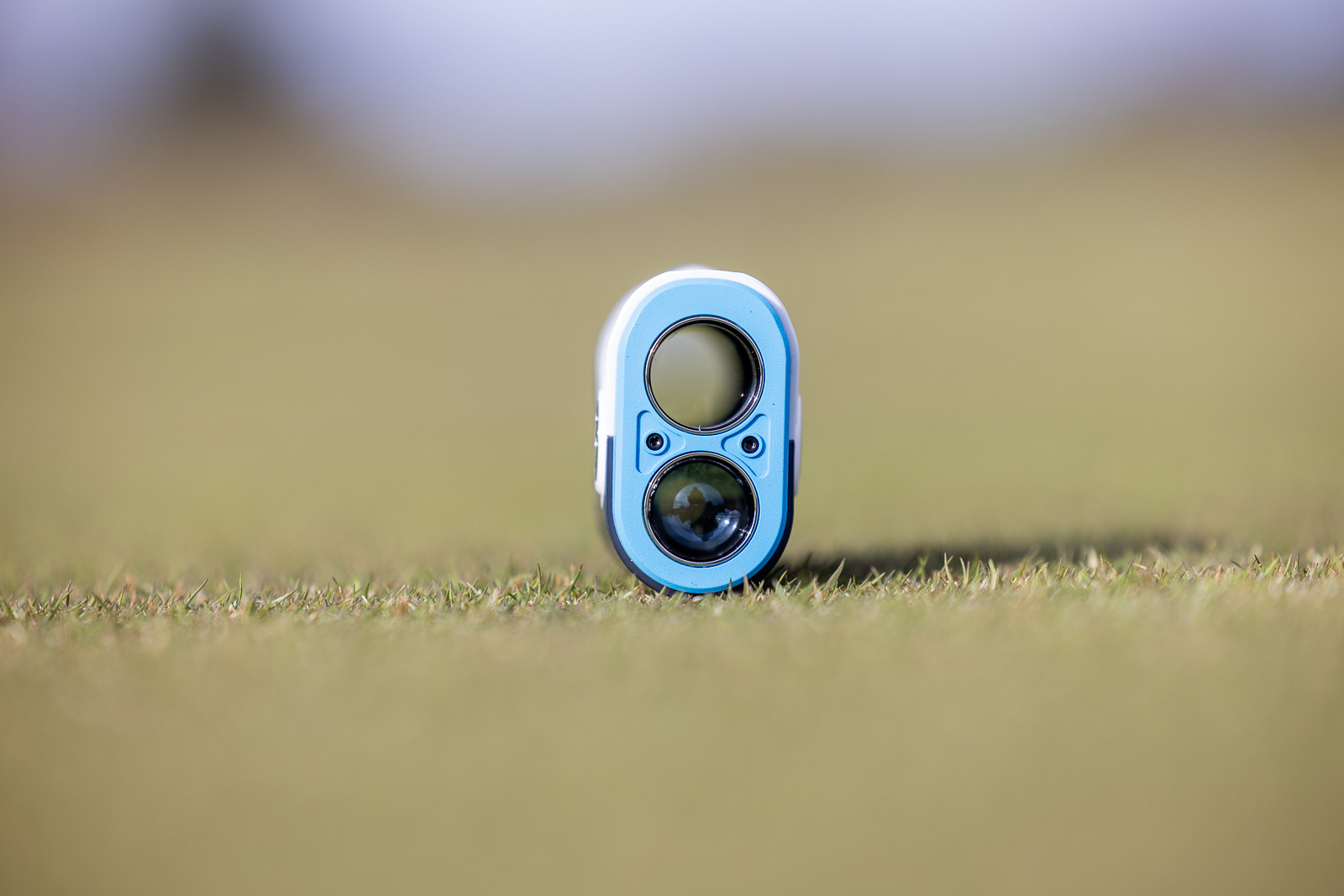Bushnell has been the name in golf rangefinders for as long as I can remember. Their stuff just works. Great optics. Rock-solid build quality. And a reputation that’s made them the go-to for pros and weekend players alike.
But lately? Things have gotten a lot more competitive.
Brands like Voice Caddie, Precision Pro, and Cobalt have been cranking out devices that are just as fast, just as smart, and oftentimes just a better value. For the first time in a long time, it felt like Bushnell was starting to fall behind.
So when they dropped the A1-Slope, their first compact rangefinder, I was definitely curious. It’s smaller, cheaper (relatively speaking), and includes slope functionality at under $300. That’s new ground for Bushnell.
The big question: is this a sign of Bushnell getting scrappy again? Or just a safe play to check a box?
After spending some time with it, I’d say this: the A1-Slope doesn’t shake up the category, but it does do exactly what Bushnell does best—keep things simple, reliable, and confidence-inspiring.
Let’s take a closer look.
First Impressions of the Bushnell A1-Slope
Right out of the box, the A1-Slope makes one thing clear: this is not your typical Bushnell. It’s small! Not tiny like the Voice Caddie Laser Fit, but noticeably more compact than the Tour V6/V6 Shift, the Pro X3/X3+, or their new Tour Hybrid model.
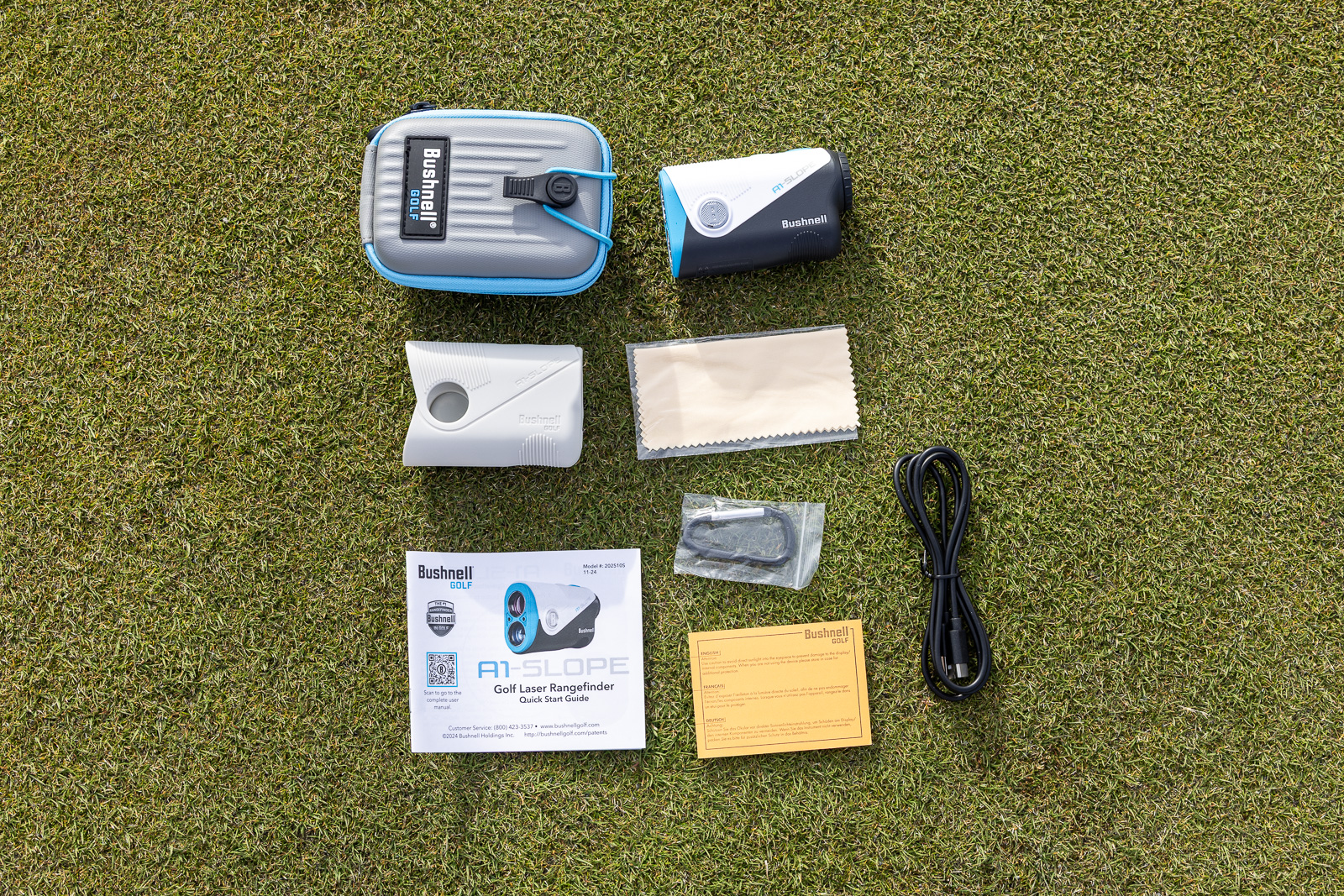
And it’s not just the size that’s different.
This is also:
- Bushnell’s first rangefinder with a rechargeable battery (USB-C)
- The cheapest slope-enabled Bushnell ever released at $299
- The first with a removable “magnetic skin” for dual-use flexibility
So yeah, this isn’t a scaled-down clone. It’s a fresh take for the brand. And while it might not blow your mind with features, the A1-Slope brings just enough newness to stand out in the emerging compact rangefinder market.
So where exactly does the A1-Slope sit in the Bushnell family tree? Let’s take a quick look.
Bushnell's A1-Slope is their first-ever compact rangefinder, offering slope-adjusted yardages, a magnetic cart mount, and USB-C charging, all for $300.
Where the A1-Slope Fits in the Bushnell Lineup
The A1-Slope carves out its own unique lane as Bushnell’s first real foray into compact territory. But how does it actually compare to the rest of the Bushnell family?
Tour V6/V6 Shift vs. A1-Slope
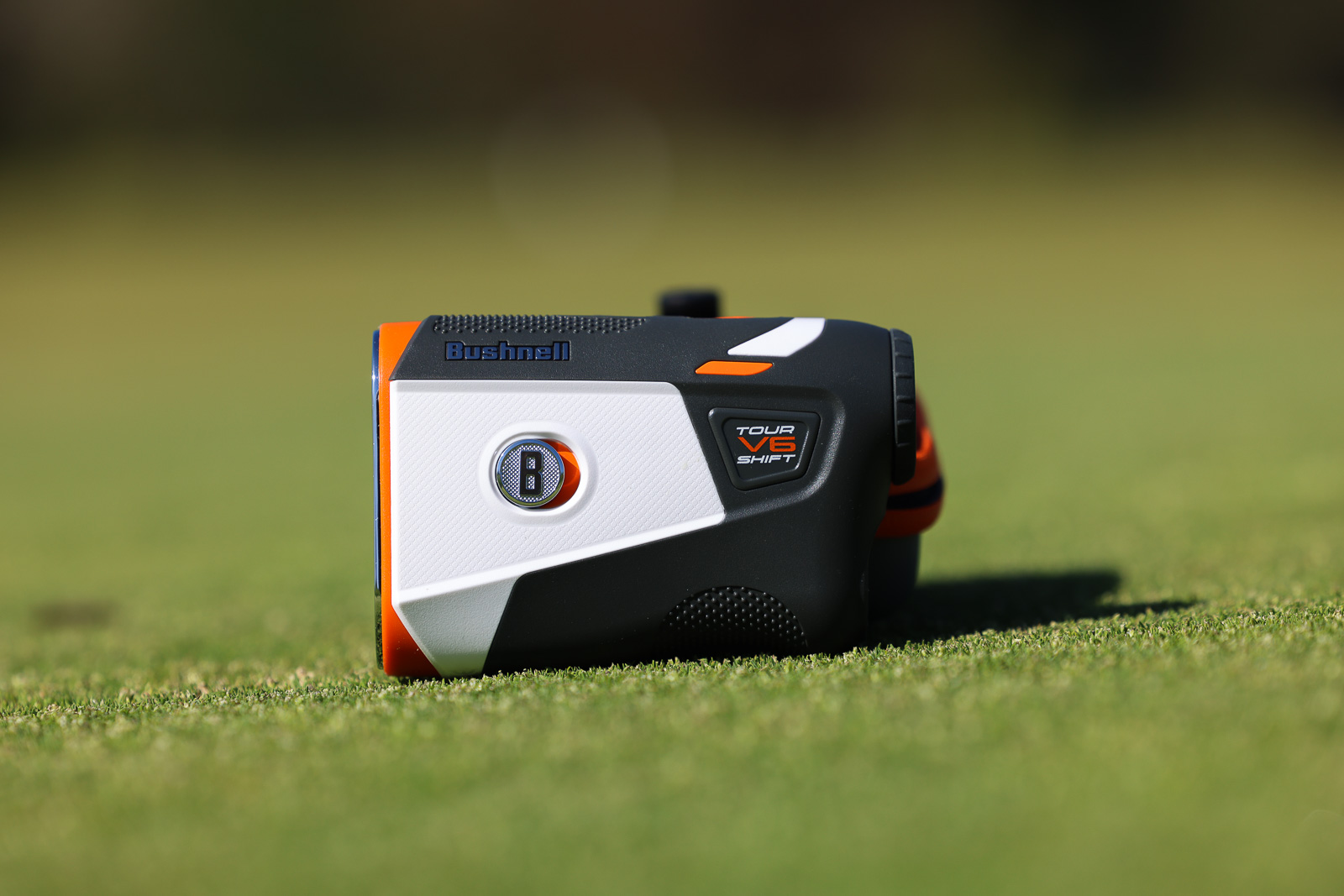
For years, the Tour V line has been Bushnell’s workhorse. The standard V6 (also $300) is larger, uses a replaceable battery, and skips slope altogether. Unless you pay up for the V6 Shift, which bumps the price to $399.
The V6 is classic and built to take a beating. You’ll definitely notice the difference in both size and feel if you switch to the A1-Slope.
Pro X3/X3+ vs. A1-Slope

Then there’s Bushnell’s flagship, the Pro X3. This is the “money is no object” device, loaded with features like environmental “Elements” (altitude and temp), dual-display color toggles, and arguably the best optics in golf.
The Pro X3+ can also interact with an app and your Bushnell or Foresight golf launch monitor to give you club recommendations based on your launch monitor data. It’s a very cutting-edge feature.
But with the Pro X3+ costing $600, or twice as much as the A1-Slope, it’s honestly overkill for most weekend golfers.
Tour Hybrid vs. A1-Slope
If you want GPS distances plus laser accuracy, Bushnell’s got the Tour Hybrid for $499.99. In addition to being more expensive, it’s bigger, heavier, and not nearly as streamlined in the pocket or on a walk as the A1-Slope.
Bottom line: The A1-Slope is the smallest, simplest, and most affordable slope model in the Bushnell line. If you want a “set it and forget it” Bushnell with slope and don’t care about the latest bells and whistles and don’t mind, or even prefer, the smaller size, the A1-Slope makes sense.
Solid Design and Feel, but Not Quite Premium
Bushnell nailed the build quality for its size. The device feels sturdy in hand, and even without the outer skin, it doesn’t feel like it’s going to break if you toss it in your bag.
The rubberized magnetic sleeve adds a touch of grip and a ton of cart-mount convenience, thanks to Bushnell’s signature BITE magnet.
But it’s not as bombproof as something like the Precision Pro Titan Slope, which comes in at $269.99. That thing is built like a tank, fully waterproof, and honestly feels like it could survive a drop from a cart onto concrete.
The A1-Slope? Durable, yes. But not invincible. Still, for a compact rangefinder, the A1 feels solidly built and very “Bushnell”.” And that counts for a lot.
Optics and Display: Clear and Fast

If you’ve used any Bushnell in the past five years, you’ll feel right at home with the A1-Slope’s viewfinder. It features:
- 6x magnification
- A bright, sharp display
- Bushnell’s PinSeeker JOLT for flag lock confirmation
The A1-Slope doesn’t include an OLED display like the Voice Caddie TL1, which you can pick up for slightly less. And you can’t toggle between red and black like the Pro X3. But the clarity is excellent, the yardages pop, and most importantly, it’s fast.
Lock-on speed is right in line with the Tour V6. Not quite Pro X3-level snappy, but certainly in the “reliable and responsive” tier.
And the JOLT feedback is strong and satisfying, exactly what you want when trying to confirm you’ve grabbed the pin and not a tree behind it.
Is the Rechargeable Battery a Blessing or a Burden?
The A1-Slope ditches the traditional CR2 battery in favor of a built-in USB-C rechargeable battery. On paper, this is great. Fewer trips to the store, less waste, and plenty of power (Bushnell claims over 3,000 clicks per charge).
But I’ll be honest. I’m still not fully sold.
Why? Because I know myself. I forget to charge things. My speaker, my watch… now my rangefinder too?
That said, this is a trend across the industry, and for a lot of golfers, it’s a welcome upgrade. The charge lasts many, many rounds, and the USB-C port is easy to access. So I don’t expect this will be an issue for many golfers.
The Removable Magnetic Skin
This is where the A1-Slope gets interesting.
Out of the box, the rangefinder is wrapped in a textured rubber sleeve that adds grip and houses a BITE magnet, Bushnell’s signature cart-mounting tech. But pop the sleeve off, and you get a slimmer, lighter device that fits more easily in your pocket.
In theory, it’s the best of both worlds:
- With skin on: cart magnet, more grip, slightly bulkier
- Skin off: true compact mode, perfect for walking
In reality, it’s a bit of a pain to switch between modes. The sleeve is snug, almost too snug. Taking it off takes a minute or two. But still, the flexibility is a nice touch and something I’ve only seen on the Caddytalk Cube implemented in this way.
What You Give Up by Going Compact
While compact is convenient, it’s not without its compromises. Here’s what you might give up by going with a smaller rangefinder.
For starters, stability. Bigger rangefinders are simply easier to hold steady, especially for players with shaky hands or if you’re ranging at longer distances.
With the A1-Slope, I found it to be stable enough, but I definitely missed the weightier, more substantial feeling of something like the Tour V6 Shift or Pro X3+. You’ll feel the difference immediately.
Button size and spacing is another subtle factor. The A1-Slope’s buttons are slightly more recessed and smaller than those on Bushnell’s full-sized models. Most of the time, it’s not an issue, but if you’re trying to navigate it with your glove hand or if you have larger hands, you might notice yourself fumbling a bit more.
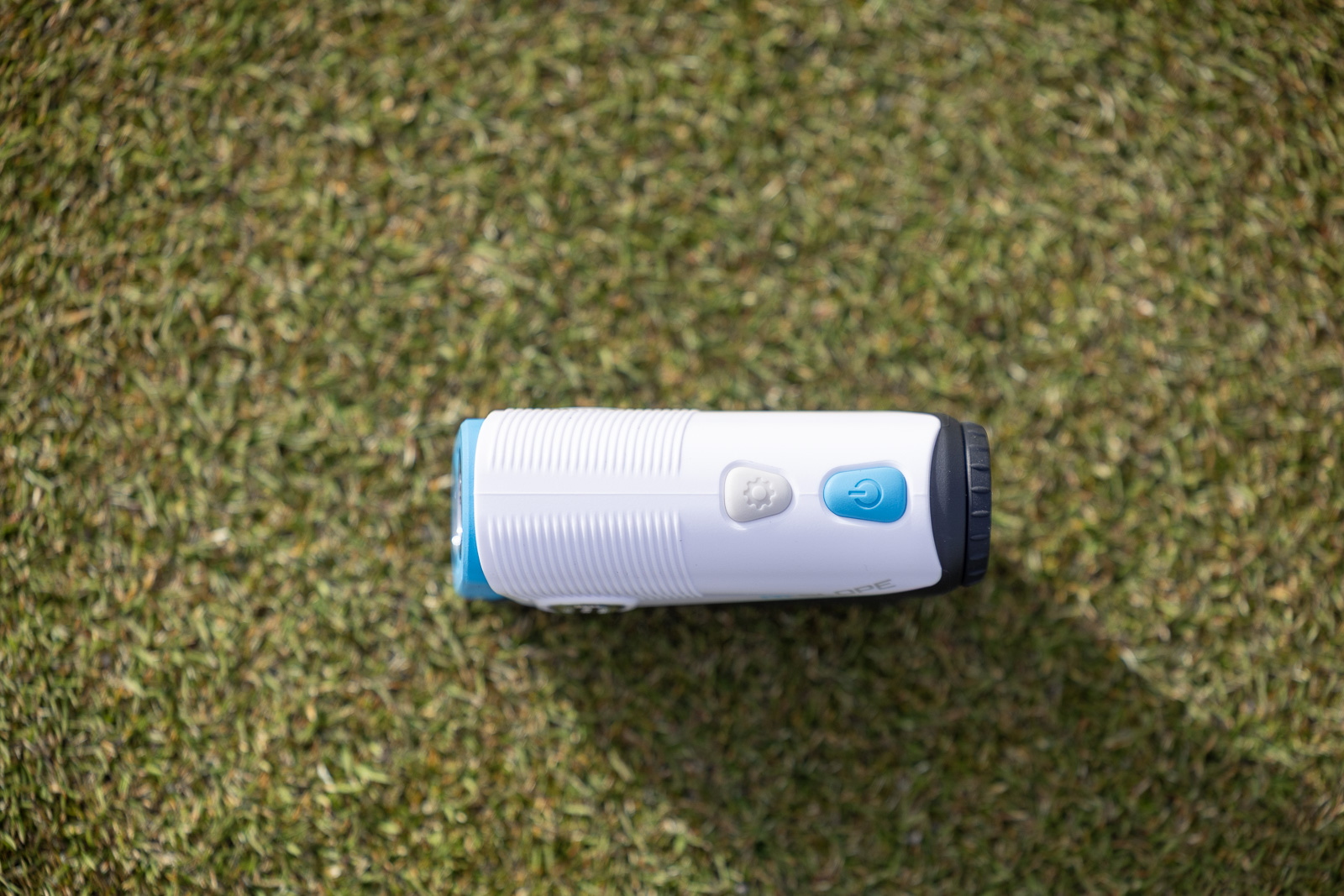
You also lose out on the bigger, brighter field of view that comes with a larger device. This doesn’t matter as much from like 100 yards, but when you’re trying to shoot a flag across a pond or over a bunker from a longer distance, having more glass in front of your eye can just frame everything in a way that’s just more pleasant and convenient.
Finally, compact models sometimes just feel less premium. The A1-Slope is well-built, but there’s a tactile satisfaction in holding a larger device that feels like it was designed for the long haul. It’s a little thing, but it might matter to you.
So while the pocket size is a major win for portability, just know that it comes at a slight cost in terms of ergonomics and stability.
Slope Performance and Accuracy
Bushnell’s yardages are the most trusted in the game, and that holds true here. The A1-Slope gives you reliable, slope-adjusted yardages quickly and confidently.
There’s no fancy “elements” algorithm like in the Pro X3+. No factoring in temperature, altitude, or barometric pressure. All the stuff that’s honestly overkill for most golfers.
The A1-Slope pretty much just focuses on the basics: clear 6x optics, slope-adjusted yardages, and fast flag acquisition.
Its selling points are in its size, its versatility, and its price.
Bushnell's A1-Slope is their first-ever compact rangefinder, offering slope-adjusted yardages, a magnetic cart mount, and USB-C charging, all for $300.
How It Stacks Up to the Competition
Let’s talk about the real question: Is the A1-Slope worth $299?
Here’s where things get tricky.
At $299.99, the A1-Slope is the cheapest slope-enabled Bushnell ever, which is huge for budget-conscious Bushnell fans.
But it’s also going up against some heavy hitters at that price point.
Voice Caddie TL1 (on sale to Breaking Eighty readers for $280)

This is the rangefinder I find myself recommending to most people these days. The fact that it originally retailed for $449 but that Breaking Eighty readers can now get it for as low as $280 is insane! At that price, it’s a ridiculously good value.
An OLED display, fast and accurate yardages, and a build quality that honestly rivals Bushnell. The OLED screen in particular is a feature you rarely see at this price point. Plus, you get slope and a magnetic mount.
I think for most people you’re getting more bang for you buck with the TL1.
Precision Pro Titan Slope (on sale for $269.99)
I’m a huge fan of the Precision Pro Titan Elite. And while the Slope model doesn’t include all of the flagship GPS features of the more expensive Precision Pro, it’s still as robust and bulletproof of a rangefinder as I’ve ever used. And, like with the A1-Slope, you can get slope-adjusted yardages for less than $300.
Here I think it depends on if you value durability or compact size. Whichever one is more important to you will help you decide between the two.
Bushnell Tour V6 ($299.99)
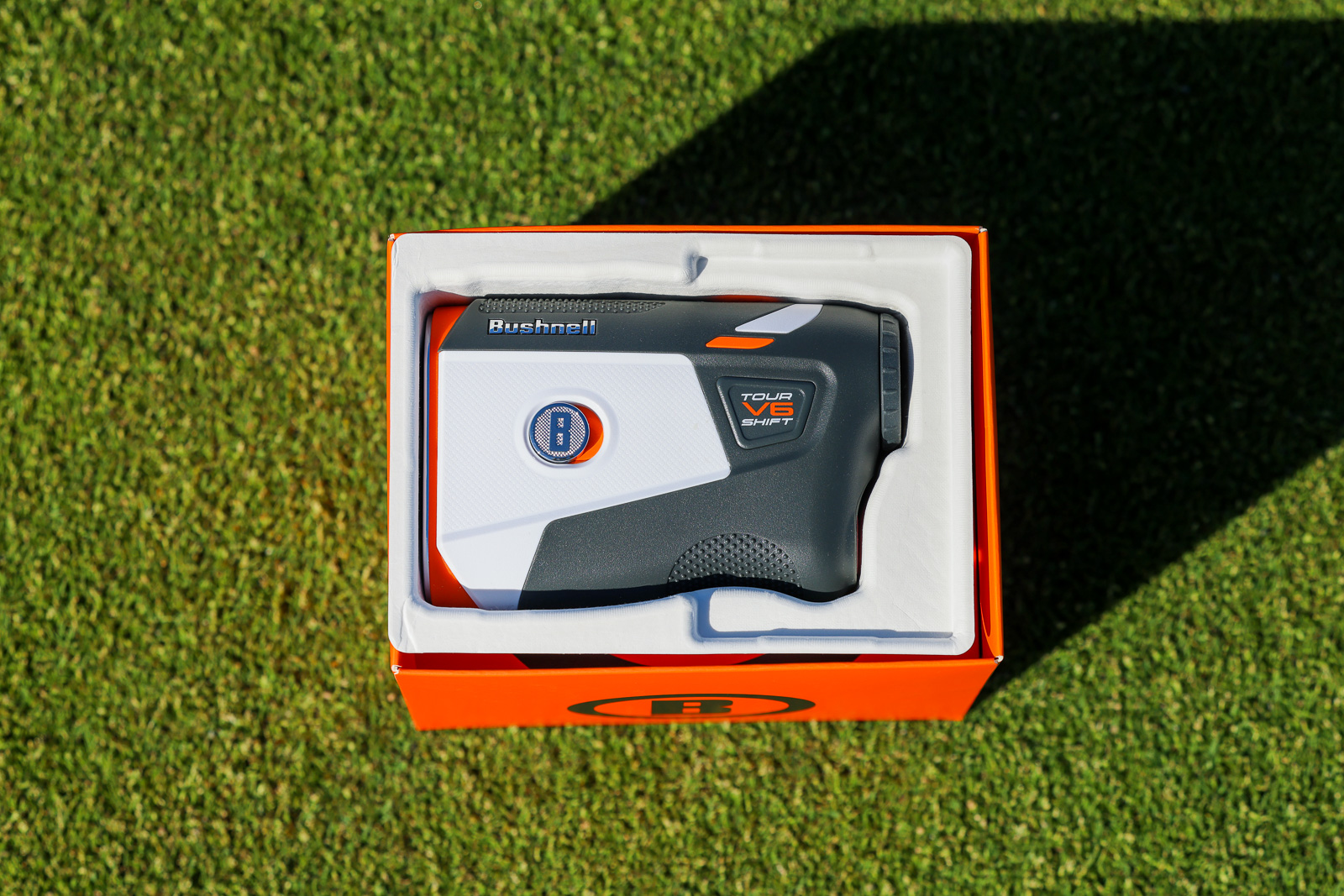
As we talked about the V6 is larger and more premium-feeling but doesn’t include slope. So, if you’d rather a heftier hand feel and a larger display and you value that more than slope-adjusted distances, the V6 is your best $300 spend in the Bushnell line. But to get slope, you’ll have to go up another $100 for the Tour V6 Shift.
Compared to these competitors, the A1-Slope is a bit of a middle child. It doesn’t have the OLED screen of the TL1, the ruggedness of the Titan, or the full-sized confidence of the V6 Shift.
But what it does have is a compact form, Bushnell optics, reliable slope performance for just $300, and the most trusted name in rangefinders. And for a lot of golfers, that’s plenty.
Voice Caddie Laser Fit ($179.99)

Then there’s the Voice Caddie Laser Fit, another one in the compact rangefinder class. Not only is it $100 less expensive than the A1-Slope, but it can also triangulate distances, which is a feature you’ll only find in a few rangefinders at this point. The Laser Fit build quality and optics aren’t as good as the A1-Slope, but it makes for an intriguing decision if you’re interested in a smaller rangefinder.
Who Is the Bushnell A1-Slope For?
This isn’t the rangefinder for someone looking to push the limits of tech. It’s not for gearheads who want OLED displays, wind data, or GPS integration baked into the viewfinder.
But if you’re someone who likes a more compact rangefinder, wants a trusted name with proven optics, rides sometimes and walks sometimes, and has $300 to spend but doesn’t want to roll the dice on a lesser-known brand, then the A1-Slope makes a compelling case.
It’s not flashy, but it’s solid. You’re paying a bit more, but you’re getting quality where it counts.
Final Thoughts on the Bushnell A1-Slope
The A1-Slope is a smart, strategic move for Bushnell. It gives them a foothold in the growing compact rangefinder market, without abandoning what’s made them successful for decades: clean optics, simple functionality, and dependable performance.
Is it the best rangefinder under $300? Not quite.
But is it a very Bushnell answer to a new category? Absolutely.
And if you’re the type of golfer who finds comfort in the familiar, appreciates smart design, and doesn’t want to compromise on trust, the A1-Slope might be the move.
Bushnell's A1-Slope is their first-ever compact rangefinder, offering slope-adjusted yardages, a magnetic cart mount, and USB-C charging, all for $300.
This page contains affiliate links. This means that if you click a link and buy one of the products on this page, we may receive a commission (at no extra cost to you!) This doesn’t affect our opinions or our reviews. Everything we do is to benefit you as the reader, so all of our reviews are as honest and unbiased as possible.
The A1-Slope introduces a lot of Bushnell firsts: compact size, slope yardages for under $300, and a rechargeable battery.
It's a Bushnell... only smaller. The A1-Slope delivers compact confidence and slope yardages at a good price. But do you like this sized rangefinder?
The Good
- Compact, lightweight, and pocketable
- Excellent optics and fast flag-locking
- Trusted Bushnell slope accuracy
- Magnetic Cart mount + USB-C charging
The Bad
- No OLED display
- No GPS or advanced
- Magnetic sleeve is tight and not quick-swap
- Slightly behind competitors on features-per-dollar
- Rechargeable battery not everyone's favorite
-
Presentation
-
Performance
-
Features and Quality
-
Price
-
Personal Affinity

